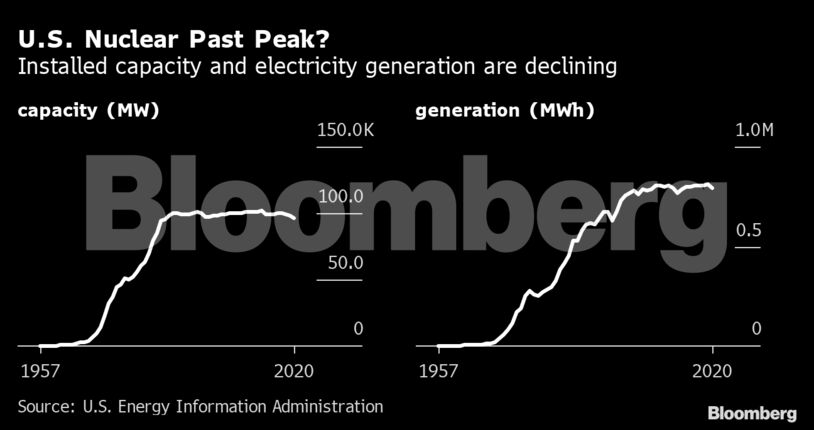“We need to pursue a silver buckshot rather than a silver bullet approach,” Granholm said in an interview with Bloomberg News in Vienna. “All of these technologies have to come into play at various levels. Everybody is seeking clean dispatchable power and nuclear provides that, even though it is more expensive.”
The former governor of Michigan said some “unusual partnerships” between nations and industries might be needed for U.S. nuclear operators to tap the $23 trillion global clean energy market over the next decade. Granholm urged more cross-border collaboration in developing a new generation of small modular reactors, as well as using nuclear plants for the production of emissions-free hydrogen.
“Nuclear is certainly a very reliable source for the power necessary to create hydrogen,” Granholm said. “There’s not a single energy minister I’ve spoken to who hasn’t talked about hydrogen as a source of clean, dispatchable baseload power.”
Granholm spoke at a meeting of senior officials at the International Atomic Energy Agency, where Chinese and Russian envoys called for more research-and-development collaboration to accelerate the deployment of new generations of miniature reactors.
The Department of Energy curtailed some joint projects with China during the Trump administration, including work on a test reactor backed by billionaire Bill Gates. Granholm suggested the urgency of the climate crisis might require re-evaluating prohibitions on some technology transfers and cooperation. She did not signal any new near-term partnerships with Russia or China. The issue could be revisited during two weeks of international climate talks — known as COP26 — beginning Oct. 31 in Glasgow, Scotland.
“We all face the same existential threat,” Granholm said. “We should be working together to achieve solutions. We need to all be pushing to find the solutions that are going to be safe and are going to be effective.”
Granholm reserved special praise for the Gates-led company, TerraPower LLC, which in June announced it would build its first test plant at a shuttered coal site in Wyoming rather than in China. That move has the potential to lower nuclear power’s cost by plugging into existing infrastructure, while at the same time helping local economies kick their dependence on fossil fuel, she said.
“It’s a terrific way to help communities transition,” Granholm said. “There’s a lot of interest in that project from other parts of the country that feel like they might be left behind in the energy transition.”
Share This:




 CDN NEWS |
CDN NEWS |  US NEWS
US NEWS 




























